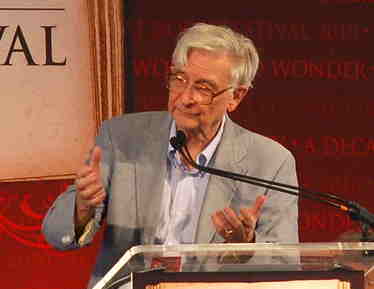Ideology as Biology
By Mark Borrello and David Sepkoski,
The New York Review
| 02. 05. 2022
"E.O. Wilson 5" by afagen is
licensed under CC BY-NC-SA 2.0
The death of renowned biologist Edward O. Wilson in December occasioned an outpouring of appreciation and commemoration appropriate for the passing of a Great Man of Science. Widely beloved for his contributions to the study of ants, biogeography, and biodiversity conservation, Wilson received laudatory obituaries and reflective essays in scientific journals and major newspapers. More than once, he was described as a “modern-day Darwin.” Yet few of his eulogizers cared to dwell on a central preoccupation of his career: the development of the field of “sociobiology” in the mid-1970s, which he defined as the study of the biological aspects of animal behavior. In the years that followed, Wilson became embroiled in a very public controversy over his application of sociobiology to human evolution and behavior. That dispute is very much alive today—and without reckoning with it no account of Wilson’s legacy can be complete.
In 1975, Wilson published a lengthy treatise on the evolution of social behavior in animals titled Sociobiology: The New Synthesis. While Wilson’s primary focus...
Related Articles
By Josie Ensor, The Times | 12.09.2025
A fertility start-up that promises to screen embryos to give would-be parents their “best baby” has come under fire for a “misuse of science”.
Nucleus Genomics describes its mission as “IVF for genetic optimisation”, offering advanced embryo testing that allows...
By Hannah Devlin, The Guardian | 12.06.2025
Couples undergoing IVF in the UK are exploiting an apparent legal loophole to rank their embryos based on genetic predictions of IQ, height and health, the Guardian has learned.
The controversial screening technique, which scores embryos based on their DNA...
By Frankie Fattorini, Pharmaceutical Technology | 12.02.2025
Próspera, a charter city on Roatán island in Honduras, hosts two biotechs working to combat ageing through gene therapy, as the organisation behind the city advertises its “flexible” regulatory jurisdiction to attract more developers.
In 2021, Minicircle set up a...
By Vardit Ravitsky, The Hastings Center | 12.04.2025
Embryo testing is advancing fast—but how far is too far? How and where do we draw the line between preventing disease and selecting for “desirable” traits? What are the ethical implications for parents, children, clinicians, and society at large? These...




